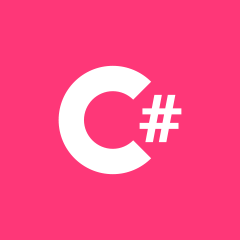C# 带槽的多线程
我有一个检查代理服务器的函数,目前它仅检查多个线程并等待所有线程完成,直到下一组线程开始。是否可以在允许的最大线程完成后立即启动一个新线程?
for (int i = 0; i < listProxies.Count(); i+=nThreadsNum)
{
for (nCurrentThread = 0; nCurrentThread < nThreadsNum; nCurrentThread++)
{
if (nCurrentThread < nThreadsNum)
{
string strProxyIP = listProxies[i + nCurrentThread].sIPAddress;
int nPort = listProxies[i + nCurrentThread].nPort;
tasks.Add(Task.Factory.StartNew<ProxyAddress>(() => CheckProxyServer(strProxyIP, nPort, nCurrentThread)));
}
}
Task.WaitAll(tasks.ToArray());
foreach (var tsk in tasks)
{
ProxyAddress result = tsk.Result;
UpdateProxyDBRecord(result.sIPAddress, result.bOnlineStatus);
}
tasks.Clear();
}
 莫回无
莫回无4回答
-

素胚勾勒不出你
这看起来简单得多:int numberProcessed = 0;Parallel.ForEach(listProxies, new ParallelOptions { MaxDegreeOfParallelism = nThreadsNum }, (p)=> { var result = CheckProxyServer(p.sIPAddress, s.nPort, Thread.CurrentThread.ManagedThreadId); UpdateProxyDBRecord(result.sIPAddress, result.bOnlineStatus); Interlocked.Increment(numberProcessed);});带插槽:var obj = new Object();var slots = new List<int>();Parallel.ForEach(listProxies, new ParallelOptions { MaxDegreeOfParallelism = nThreadsNum }, (p)=> { int threadId = Thread.CurrentThread.ManagedThreadId; int slot = slots.IndexOf(threadId); if (slot == -1) { lock(obj) { slots.Add(threadId); } slot = slots.IndexOf(threadId); } var result = CheckProxyServer(p.sIPAddress, s.nPort, slot); UpdateProxyDBRecord(result.sIPAddress, result.bOnlineStatus);});我在那里采取了一些捷径来保证线程安全。您不必执行正常的检查-锁定-检查舞蹈,因为永远不会有两个线程尝试将相同的 threadid 添加到列表中,因此第二次检查将始终失败并且不需要。其次,出于同样的原因,我认为您也不需要锁定外部 IndexOf 。这使得它成为一个非常高效的并发例程,无论可枚举中有多少项,都很少锁定(它应该只锁定 nThreadsNum 次)。 -

人到中年有点甜
另一个解决方案是使用 aSemaphoreSlim或使用 的生产者-消费者模式BlockinCollection<T>。两种解决方案都支持取消。信号量瘦身private async Task CheckProxyServerAsync(IEnumerable<object> proxies){ var tasks = new List<Task>(); int currentThreadNumber = 0; int maxNumberOfThreads = 8; using (semaphore = new SemaphoreSlim(maxNumberOfThreads, maxNumberOfThreads)) { foreach (var proxy in proxies) { // Asynchronously wait until thread is available if thread limit reached await semaphore.WaitAsync(); string proxyIP = proxy.IPAddress; int port = proxy.Port; tasks.Add(Task.Run(() => CheckProxyServer(proxyIP, port, Interlocked.Increment(ref currentThreadNumber))) .ContinueWith( (task) => { ProxyAddress result = task.Result; // Method call must be thread-safe! UpdateProxyDbRecord(result.IPAddress, result.OnlineStatus); Interlocked.Decrement(ref currentThreadNumber); // Allow to start next thread if thread limit was reached semaphore.Release(); }, TaskContinuationOptions.OnlyOnRanToCompletion)); } // Asynchronously wait until all tasks are completed // to prevent premature disposal of semaphore await Task.WhenAll(tasks); }}生产者-消费者模式// Uses a fixed number of same threadsprivate async Task CheckProxyServerAsync(IEnumerable<ProxyInfo> proxies){ var pipe = new BlockingCollection<ProxyInfo>(); int maxNumberOfThreads = 8; var tasks = new List<Task>(); // Create all threads (count == maxNumberOfThreads) for (int currentThreadNumber = 0; currentThreadNumber < maxNumberOfThreads; currentThreadNumber++) { tasks.Add( Task.Run(() => ConsumeProxyInfo(pipe, currentThreadNumber))); } proxies.ToList().ForEach(pipe.Add); pipe.CompleteAdding(); await Task.WhenAll(tasks);}private void ConsumeProxyInfo(BlockingCollection<ProxyInfo> proxiesPipe, int currentThreadNumber){ while (!proxiesPipe.IsCompleted) { if (proxiesPipe.TryTake(out ProxyInfo proxy)) { int port = proxy.Port; string proxyIP = proxy.IPAddress; ProxyAddress result = CheckProxyServer(proxyIP, port, currentThreadNumber); // Method call must be thread-safe! UpdateProxyDbRecord(result.IPAddress, result.OnlineStatus); } }} -

30秒到达战场
我建议稍微改变一下你的方法。不要启动和停止线程,而是将代理服务器数据放入并发队列中,每个代理服务器对应一个项目。然后创建固定数量的线程(或异步任务)来处理队列。在我看来,这更有可能提供平稳的性能(您不会一遍又一遍地启动和停止线程,这会产生开销)并且更容易编码。一个简单的例子:class ProxyChecker{ private ConcurrentQueue<ProxyInfo> _masterQueue = new ConcurrentQueue<ProxyInfo>(); public ProxyChecker(IEnumerable<ProxyInfo> listProxies) { foreach (var proxy in listProxies) { _masterQueue.Enqueue(proxy); } } public async Task RunChecks(int maximumConcurrency) { var count = Math.Max(maximumConcurrency, _masterQueue.Count); var tasks = Enumerable.Range(0, count).Select( i => WorkerTask() ).ToList(); await Task.WhenAll(tasks); } private async Task WorkerTask() { ProxyInfo proxyInfo; while ( _masterList.TryDequeue(out proxyInfo)) { DoTheTest(proxyInfo.IP, proxyInfo.Port) } }} -

胡说叔叔
如果我正确理解你的问题,这实际上是相当简单的await Task.WhenAny。基本上,您保留所有正在运行的任务的集合。一旦运行的任务达到一定数量,您将等待一个或多个任务完成,然后从集合中删除已完成的任务并继续添加更多任务。下面是我的意思的一个例子: var tasks = new List<Task>(); for (int i = 0; i < 20; i++) { // I want my list of tasks to contain at most 5 tasks at once if (tasks.Count == 5) { // Wait for at least one of the tasks to complete await Task.WhenAny(tasks.ToArray()); // Remove all of the completed tasks from the list tasks = tasks.Where(t => !t.IsCompleted).ToList(); } // Add some task to the list tasks.Add(Task.Factory.StartNew(async delegate () { await Task.Delay(1000); })); }
 随时随地看视频慕课网APP
随时随地看视频慕课网APP
相关分类




 C#
C#